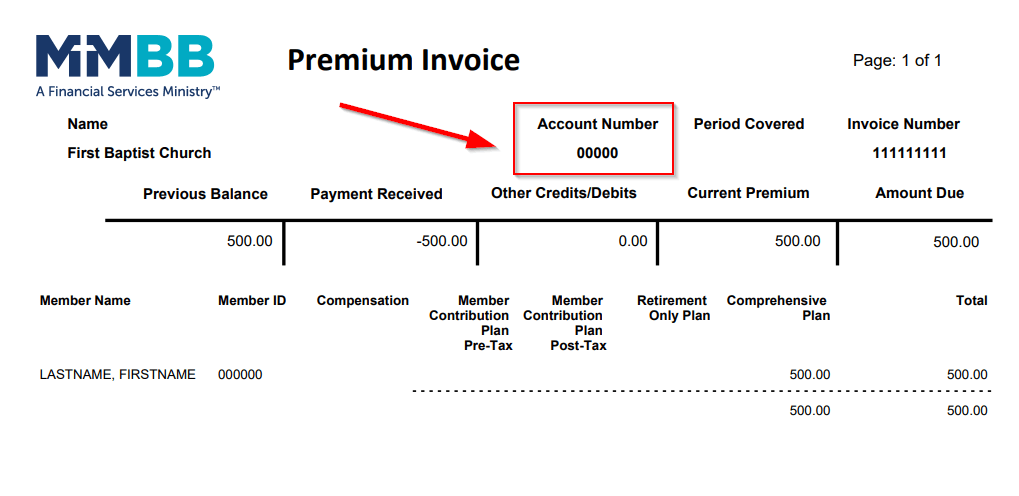The Markets (second quarter through June 30, 2025)
Throughout the second quarter of 2025, global trade tensions caused by reciprocal tariffs and increasing unrest in the Middle East impacted the markets on a daily basis. A new wave of tariffs, particularly against China, created widespread market anxiety and triggered a downturn in April. This was followed by a 90-day de-escalation period announced in May, which temporarily paused some of the heightened tariffs and led to a sharp market rally. The uncertainty surrounding ongoing trade negotiations and the potential for new tariffs remained a key source of volatility throughout the quarter. After a tumultuous start to the quarter, the market showed remarkable resilience and ended June on a high note.
U.S. stocks rebounded in Q2. The S&P 500 began 2025 by enduring its first negative quarter since 2023, and followed that by a decline in April. However, the S&P 500 rebounded later in Q2 to post sharp gains in May and June. The NASDAQ, which had declined over 10.0% in the first quarter, showed strength in the second quarter, driven by growth in AI shares and digital stocks. The Dow and the small caps of the Russell 2000 also closed the second quarter higher. Among the market sectors, the second quarter saw information technology climb more than 23.0%, while communication services rose nearly 20.0%. Energy, health care, and real estate were the only market sectors to lose ground at the end of Q2. The bond market in the second quarter was characterized by heightened volatility and a complex interplay of economic and geopolitical factors, primarily driven by evolving tariff policies and persistent inflation concerns.
While inflation did not escalate to the level some analysts anticipated due to increased tariffs, consumer prices remained somewhat elevated. The Consumer Price Index (CPI) and the personal consumption expenditures (PCE) price index gradually decreased, easing some of the inflation fears that had built up earlier in the year. Despite the moderation, inflation remained above the Federal Reserve's 2.0% target. The Fed maintained a cautious stance on interest rates, keeping them unchanged, as it balanced the need to control inflation with the potential for an economic slowdown. Corporate earnings reached new highs in the first quarter. While analysts projected slower growth in Q2, early returns on earnings have been mostly favorable, offering cautious optimism for companies in the second quarter. Job growth, while steady, also declined in Q2. The unemployment rate edged up to 4.2% in the second quarter. Both new claims for unemployment benefits and continuing claims rose during the second quarter.
The U.S. economy, as measured by gross domestic product, contracted by 0.5% in the first quarter, partly due to a surge in imports, as businesses increased costs for products and services in anticipation of tariff increases. While a rebound was expected for Q2, the overall growth trajectory of the economy for the remainder of 2025 is anticipated to be slower than in previous years. The U.S. real estate market could be best characterized in the second quarter by a continued upward trend in home prices, gradually improving inventory, and persistently elevated, though somewhat moderating, mortgage rates. The average 30-year fixed-rate mortgage as of June 18 was 6.81%, according to Freddie Mac, down from 6.84% one week before and lower than 6.87% one year ago. Gold prices in the second quarter saw significant activity, continuing the strong bullish trend from the first quarter. Gold prices remained at elevated levels, experiencing both sharp rallies and some pullbacks throughout Q2, continuing to set new record highs, with prices surpassing $3,400 per ounce and even touching $3,500 per ounce in April.
Gold, considered a safe haven during volatile economic times, had its best quarter since 1986 after rising nearly 20.0% in the first quarter, as the potential trade war and economic slowdown sent worried investors scurrying for more stable investments. Crude oil prices fluctuated in Q2, influenced by supply increases, softening demand forecasts, and lingering geopolitical tensions. While initial oversupply concerns and weak demand forecasts led to a dip, the latter part of the quarter saw prices rebound, largely driven by easing trade tensions and renewed geopolitical instability in the Middle East. The retail price for regular gasoline was $3.213 per gallon on June 23, $0.053 above the price a month earlier but $0.225 below the price from a year ago.
MARKET SUMMARY
| MARKET/INDEX |
2024 CLOSE |
AS OF 6/30 |
MONTHLY CHANGE |
QUARTERLY CHANGE |
YTD CHANGE |
| DJIA |
42,544.22 |
44,094.77 |
4.32% |
4.98% |
3.64% |
| NASDAQ |
19,310.79 |
20,369.73 |
6.57% |
17.75% |
5.48% |
| S&P 500 |
5,881.63
|
6,204.95 |
4.96% |
10.57% |
5.50% |
| RUSSELL 2000 |
2,230.16 |
2,175.04 |
5.26% |
8.16% |
-2.47% |
| GLOBAL DOW |
4,863.01 |
5,519.07 |
3.62% |
8.09% |
13.49% |
| FED. FUNDS |
4.25%-4.50% |
4.25%-4.50% |
0 bps |
0 bps |
0 bps |
| 10-YEAR TREASURIES |
4.57% |
4.23% |
-17 bps |
-1 bps |
-34 bps |
| US DOLLAR-DXY |
108.44 |
96.80 |
-2.65% |
-7.09% |
-10.73% |
| CRUDE OIL-CL=F |
$71.76 |
$65.09 |
7.04% |
-8.81% |
-9.29% |
| GOLD-GC=F |
$2,638.50 |
$3,319.30 |
0.14% |
5.16% |
25.80% |
Chart reflects price changes, not total return. Because it does not include dividends or splits, it should not be used to benchmark performance of specific investments.
Latest Economic Reports
- Employment: Job growth exceeded expectations in May after adding 139,000 new jobs (147,000 in April). The May total was short of the average monthly gain of 149,000. Employment was revised down by a combined 95,000 for March and April. In May, the unemployment rate was unchanged at 4.2%. The number of unemployed persons in May, at 7.2 million, changed marginally from the April estimate. The number of long-term unemployed (those jobless for 27 weeks or more) declined by 218,000 to 1.5 million. These individuals accounted for 20.4% of all unemployed persons. The labor force participation rate in May fell 0.2 percentage point from April to 62.4%. The employment-population ratio decreased 0.3 percentage point to 59.7%. Average hourly earnings increased by $0.15, or 0.4%, to $36.24 in May. Over the last 12 months, average hourly earnings rose by 3.9%. The average workweek was 34.3 hours for the third month in a row
- There were 236,000 initial claims for unemployment insurance for the week ended June 21, 2025. During the same period, the total number of workers receiving unemployment insurance was 1,974,000. A year ago, there were 233,000 initial claims, while the total number of workers receiving unemployment insurance was 1,844,000.
- FOMC/interest rates: As expected, the Federal Open Market Committee held the federal funds target rate range at 4.25%-4.50% following its meeting in June. While the Committee indicated that while current economic activity continued to expand at a solid pace and the unemployment rate remained low, inflation was somewhat elevated. The FOMC highlighted increased uncertainty about the economic outlook and noted increased risks to both sides of its dual mandate of maximum employment and inflation at the rate of 2.0%.
- GDP/Budget: The economy, as measured by gross domestic product, decelerated at an annualized rate of 0.5% in the first quarter of 2025 following an increase of 2.4% in the fourth quarter of 2024. Compared to the fourth quarter, the decrease in GDP in the first quarter primarily reflected an increase in imports, which are a subtraction in the calculation of GDP, a decrease in government spending, and a deceleration in consumer spending. These movements were partly offset by an increase in investment. Consumer spending, as measured by the PCE index, rose 0.5% in the first quarter, compared to a 4.0% advance in the fourth quarter. Spending on services inched up 0.6% in the first quarter, compared with a 3.0% increase in the fourth quarter. Consumer spending on goods rose 0.1% in the first quarter (6.2% in the fourth quarter). Fixed investment increased 7.6% in the first quarter after decreasing 1.1% in the fourth quarter. Nonresidential (business) fixed investment rose 10.3% in the first quarter after falling 3.0% in the previous quarter. Residential fixed investment decreased 1.3% in the first quarter following a 5.5% increase in the fourth quarter. Exports advanced 0.4% in the first quarter, compared with a 0.2% decline in the previous quarter. Imports vaulted 37.9% in the first quarter after ticking down 1.9% in the fourth quarter.
- May saw the federal budget register a deficit of $316 billion, in line with expectations and below the deficit of $347 billion in May 2024. May receipts were $371 billion versus $324 billion a year ago. May outlays were $687 billion versus $671 billion a year ago. The deficit through the first eight months of fiscal year 2025, at $1,365 billion, was above the $1,202 billion deficit over the first eight months of the previous fiscal year. Through the first eight months of fiscal year 2025, individual income tax receipts added up to $1,823 billion, while outlays for Social Security totaled $1,040 billion.
-
Inflation/consumer spending: According to the latest Personal Income and Outlays report, personal income fell 0.4% in May (+0.7% in April), while disposable personal income declined 0.6% (+0.8% in April). Consumer spending decreased 0.1% in May after increasing 0.2% the previous month. In May, the PCE price index rose 0.1% and the PCE price index less food and energy (core prices) increased 0.2% for the month. The PCE price index rose 2.3% since May 2024, while core prices increased 2.7% over the same period. In May, prices for goods inched up 0.1% and services rose 0.2%. Food prices increased 0.2%, while energy prices declined 1.0%.
-
The Consumer Price Index rose 0.1% in May after increasing 0.2% in April. Over the 12 months ended in May, the CPI rose 2.4%, 0.1 percentage point above the rate for the 12 months ended in April. Core prices (excluding food and energy) inched up 0.1% last month and 2.8% since May 2024. Prices for shelter rose 0.3% in May (the same increase as in April). Food prices increased 0.3% last month after falling 0.1% in April. Energy prices declined 1.0% in May, aided by a 2.6% decrease in gasoline prices. Over the last 12 months ended in May, food prices increased 2.9%, energy prices declined 3.5%, and shelter prices rose 3.9%.
-
Prices at the wholesale level ticked up 0.1% in May following a revised 0.2% decrease in April, according to the Producer Price Index. Producer prices increased 2.6% for the 12 months ended in May after rising 2.4% for the 12-month period ended in April. Excluding food and energy, producer prices rose 0.1% in May and increased 3.0% for the year. In May, prices for goods increased 0.2% from the previous month and rose 1.3% since May 2024. Last month saw prices for services inch up 0.1% after a revised 0.4% decrease in April. Prices for services have risen 3.2% for the 12 months ended in May, a decrease of 0.1 percentage point from the increase over the 12 months ended in April.
-
Housing: Sales of existing homes increased 0.8% in May but were 0.7% under the May 2024 figure. The median existing-home price, at $422,800, was a record high for the month of May. The median existing-home price was above the April estimate of $414,000 and 1.8% higher than the year-earlier price of $417,200. Unsold inventory of existing homes in May represented a 4.6-month supply at the current sales pace, marginally longer than the April supply of 4.4 months and well above the 3.8-month supply from a year ago. Sales of existing single-family homes rose 1.1% in May and were 0.3% above the estimate from April 2024. The median existing single-family home price was $427,800 in May ($418,000 in April), and 1.3% above the May 2024 estimate of $422,400.
-
New single-family home sales declined 13.7% in May and were 6.3% below the May 2024 figure. The median sales price of new single-family houses sold in May was $426,600 ($411,400 in April), which was higher than the May 2024 estimate of $414,300. The May average sales price was $522,200 ($511,200 in April), up from the May 2024 average sales price of $499,300. Inventory of new single-family homes for sale in May represented a supply of 9.8 months at the current sales pace, up from the April estimate of 8.3 months and above the 8.5-month supply from a year earlier.
-
Manufacturing: Industrial production declined 0.2% in May following a 0.1% advance in April. Manufacturing output increased 0.1% last month after falling 0.5% in April. In May, mining increased 0.1%, while utilities fell 2.9%. Over the 12 months ended in May, total industrial production was 0.6% above its year-earlier reading. Since May 2024, manufacturing increased 0.5%, utilities fell 1.6%, while mining increased 2.9%.
-
New orders for durable goods jumped 16.4% in May after falling 6.6% in April. Transportation equipment drove the May advance after increasing 48.3%. New orders excluding transportation, increased 0.5%. Excluding defense, new orders rose 15.5%. For the 12 months ended in May, durable goods orders advanced 6.9%.
-
Imports and exports: Import prices were unchanged in May following a 0.1% increase in April. Prices for imports increased 0.2% for the 12 months ended in May. Import fuel prices decreased 4.0% in May, the largest monthly decline since September 2024. Import fuel prices fell 15.7% over the past 12 months, which was the largest 12-month decline since the year ended September 2024. Export prices declined 0.9% in May, the largest one-month decrease since October 2023. Despite the May decline, export prices increased 1.7% from May 2024 to May 2025.
-
The international trade in goods deficit in May was $96.6 billion, 11.1% above the April estimate. Exports of goods for May were 5.2% below April exports. Imports of goods for May were unchanged from April imports. Over the 12 months ended in May, exports rose 6.2%, while imports increased 2.8%
-
The latest information on international trade in goods and services, released June 5, saw the goods and services deficit fall 55.5% in April to $61.6 billion. Exports of goods increased 3.0% to $289.4 billion in April. Imports of goods declined 16.3% to $351.0 billion. For the 12 months ended in April 2025, the goods and services deficit increased $179.3 billion, or 65.7%, from the same period in 2024. Exports increased $58.4 billion, or 5.5%. Imports increased $237.8 billion, or 17.8%
-
International markets: In contrast to the U.S. market's early struggles this year, international markets, particularly those in Europe and Asia, performed well, partly due to a weakening U.S. dollar, which boosted the value of non-U.S. equities. In June, the STOXX Europe 600 Index fell 1.2%; the United Kingdom's FTSE dipped 0.2%; Japan's Nikkei 225 Index gained 8.1%; and China's Shanghai Composite Index climbed 2.9%. For the second quarter, the STOXX Europe 600 Index rose 1.4%; the United Kingdom's FTSE gained 2.1%; Japan's Nikkei 225 Index vaulted 13.7%; and China's Shanghai Composite Index increased 3.3%
-
Consumer confidence: Consumer confidence weakened in June, wiping out nearly half of May's sharp gains. The Conference Board Consumer Confidence Index® declined by 5.4 points in May to 93.0. The Present Situation Index, based on consumers' assessment of current business and labor market conditions, decreased 6.4 points to 129.1. The Expectations Index, based on consumers' short-term outlook for income, business, and labor market conditions, dropped 4.6 points to 69.0, substantially below the threshold of 80 that typically signals a recession ahead.
Eye on the Quarter Ahead
July is an important month for economic news, despite the fact that it is also a popular vacation month. The employment report for June came out at the beginning of the month. The number of new jobs has been waning over the past several months. The Federal Open Market Committee meets at the end of the month when interest rates may be adjusted lower.
Data sources: Economic: Based on data from U.S. Bureau of Labor Statistics (unemployment, inflation);
U.S. Department of Commerce (GDP, corporate profits, retail sales, housing); S&P/Case-Shiller 20-City Composite Index (home prices); Institute for Supply Management (manufacturing/services). Performance: Based on data reported in WSJ Market Data Center (indexes); U.S. Treasury (Treasury yields); U.S. Energy Information Administration/Bloomberg.com Market Data (oil spot price, WTI Cushing, OK); www.goldprice.org (spot gold/silver); Oanda/FX Street (currency exchange rates). News items are based on reports from multiple commonly available international news sources (i.e., wire services) and are independently verified when necessary with secondary sources such as government agencies, corporate press releases, or trade organizations. All information is based on sources deemed reliable, but no warranty or guarantee is made as to its accuracy or completeness. Neither the information nor any opinion expressed herein constitutes a solicitation for the purchase or sale of any securities, and should not be relied on as financial advice. Forecasts are based on current conditions, subject to change, and may not come to pass. U.S. Treasury securities are guaranteed by the federal government as to the timely payment of principal and interest. The principal value of Treasury securities and other bonds fluctuates with market conditions. Bonds are subject to inflation, interest-rate, and credit risks. As interest rates rise, bond prices typically fall. A bond sold or redeemed prior to maturity may be subject to loss. Past performance is no guarantee of future results. All investing involves risk, including the potential loss of principal, and there can be no guarantee that any investing strategy will be successful.
The Dow Jones Industrial Average (DJIA) is a price weighted index composed of 30 widely traded blue-chip U.S. common stocks. The S&P 500 is a market cap weighted index composed of the common stocks of 500 largest, publicly traded companies in leading industries of the U.S. economy. The NASDAQ Composite Index is a market-value weighted index of all common stocks listed on the NASDAQ stock exchange. The Russell 2000 is a market-cap weighted index composed of 2,000 U.S. small-cap common stocks. The Global Dow is an equally weighted index of 150 widely traded blue-chip common stocks worldwide. The U.S. Dollar Index is a geometrically weighted index of the value of the U.S. dollar relative to six foreign currencies. Market indexes listed are unmanaged and are not available for direct investment.
IMPORTANT DISCLOSURES
Broadridge Investor Communication Solutions, Inc. does not provide investment, tax, legal, or retirement advice or recommendations. The information presented here is not specific to any individual’s personal circumstances.
To the extent that this material concerns tax matters, it is not intended or written to be used, and cannot be used, by a taxpayer for the purpose of avoiding penalties that may be imposed by law. Each taxpayer should seek independent advice from a tax professional based on his or her individual circumstances.
These materials are provided for general information and educational purposes based upon publicly available information from sources believed to be reliable — we cannot assure the accuracy or completeness of these materials. The information in these materials may change at any time and without notice.








